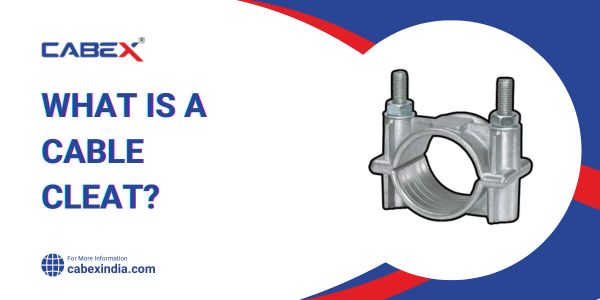Introduction:
What is a Cable Cleat? Cable management is a crucial aspect of any electrical or industrial installation. Among the various components that ensure the safety and efficiency of cable systems, cable cleats play a pivotal role. But What is a Cable Cleat? In this comprehensive guide, we will delve into the definition, functions, types, and applications of cable cleats, shedding light on their significance within the realm of cable management.
Understanding Cable Cleats:
A cable cleat is a mechanical device designed to secure and support cables in a fixed position. It prevents excessive movement, vibration, and stress that can be caused by factors such as short circuits, overloads, or external forces. Cable cleats are primarily used in industries where cable systems are exposed to harsh conditions, including power generation, distribution, rail, mining, and oil and gas sectors.
Importance of Cable Cleats:
Cable cleats serve a dual purpose – they ensure the longevity of cable installations and enhance safety for personnel and equipment. By keeping cables in place, cable cleats prevent wear and tear, which can lead to insulation damage and short circuits. Moreover, cleats mitigate the risk of cable deformation, which can negatively impact the overall efficiency of the system.
Functions of Cable Cleats:
Strain Relief:
Cable cleats secure cables at specific intervals, distributing the load evenly along the length of the cable run. This prevents undue stress on individual cables and maintains their structural integrity.
Short-Circuit Protection:
During a short circuit, cables can experience intense thermal and electromagnetic forces. Cable cleats prevent cables from coming into contact with each other, reducing the risk of short circuits and potential fire hazards.
Vibration Damping:
Industrial environments often produce vibrations that can weaken cables over time. Cable cleats dampen vibrations and oscillations, extending the lifespan of cables.
Emergency Shutdown:
In critical situations, such as short circuits or equipment failures, a well-designed cable cleat system ensures that cables remain intact and operational, allowing for controlled shutdowns and preventing further damage.
Types of Cable Cleats:
- Single Cable Cleats: These cleats are designed to hold individual cables in place. They are often used in applications where cables need to be separated or secured individually.
- Multicore Cable Cleats: Suitable for bundled cables or cable trays, these cleats provide comprehensive support to multiple cables within a single unit.
- Trefoil Cleats: Trefoil cleats are designed for three-phase cable systems, ensuring that the arrangement of the cables mimics a balanced and symmetrical trefoil formation.
- Clamp Cleats: Clamp cleats offer a strong grip around cables, suitable for high-stress environments where cable movement is a concern.
Applications of Cable Cleats:
- Power Generation: Cable cleats are essential in power plants to secure high-voltage cables, preventing disruptions and ensuring continuous power supply.
- Rail and Transportation: Cleats are used to secure signaling cables along railway tracks, ensuring the safety and reliability of train operations.
- Oil and Gas Industry: In explosive environments like oil rigs, cable cleats keep cables stable and secure, reducing the risk of sparks that could lead to explosions.
- Mining Sector: Harsh mining conditions require cables to be well-maintained and protected. Cable cleats offer the necessary support in these challenging environments.
- Data Centers: Cable cleats are utilized in data centers to manage the extensive network of power and data cables, promoting efficient airflow and preventing overheating.
Installation Guidelines:
Proper installation of cable cleats is crucial for their effective functioning. Here are some essential guidelines:
- Spacing: Follow the manufacturer’s recommendations for cleat spacing to ensure even distribution of loads.
- Cable Diameter: Choose cleats that are suitable for the diameter of the cables being secured.
- Environmental Factors: Consider factors such as temperature variations, exposure to corrosive substances, and mechanical stresses when selecting cleats.
- Alignment: Proper alignment of cables within the cleats is vital to prevent stress concentrations and uneven loads.
Conclusion:
What is a Cable Cleat? In the world of cable management, cable cleats stand as guardians of safety and efficiency. Their ability to secure cables, mitigate risks, and ensure the continuity of operations makes them indispensable in various industries. By understanding the functions, types, and applications of cable cleats, professionals can make informed decisions to enhance the reliability and longevity of their cable systems. So, the next time you encounter the question, “What is a cable cleat?” you’ll have a comprehensive answer that highlights its significance in the realm of cable management.



